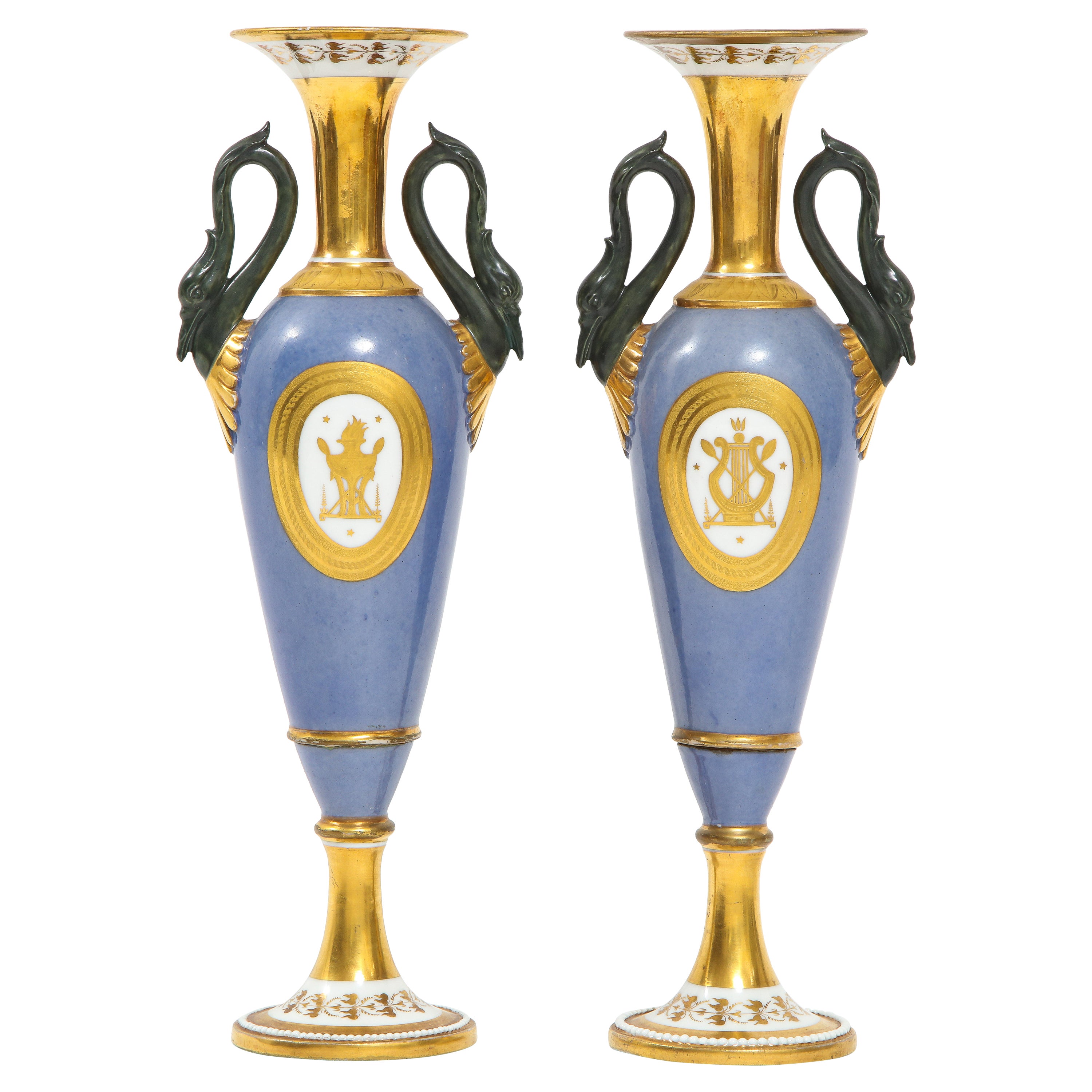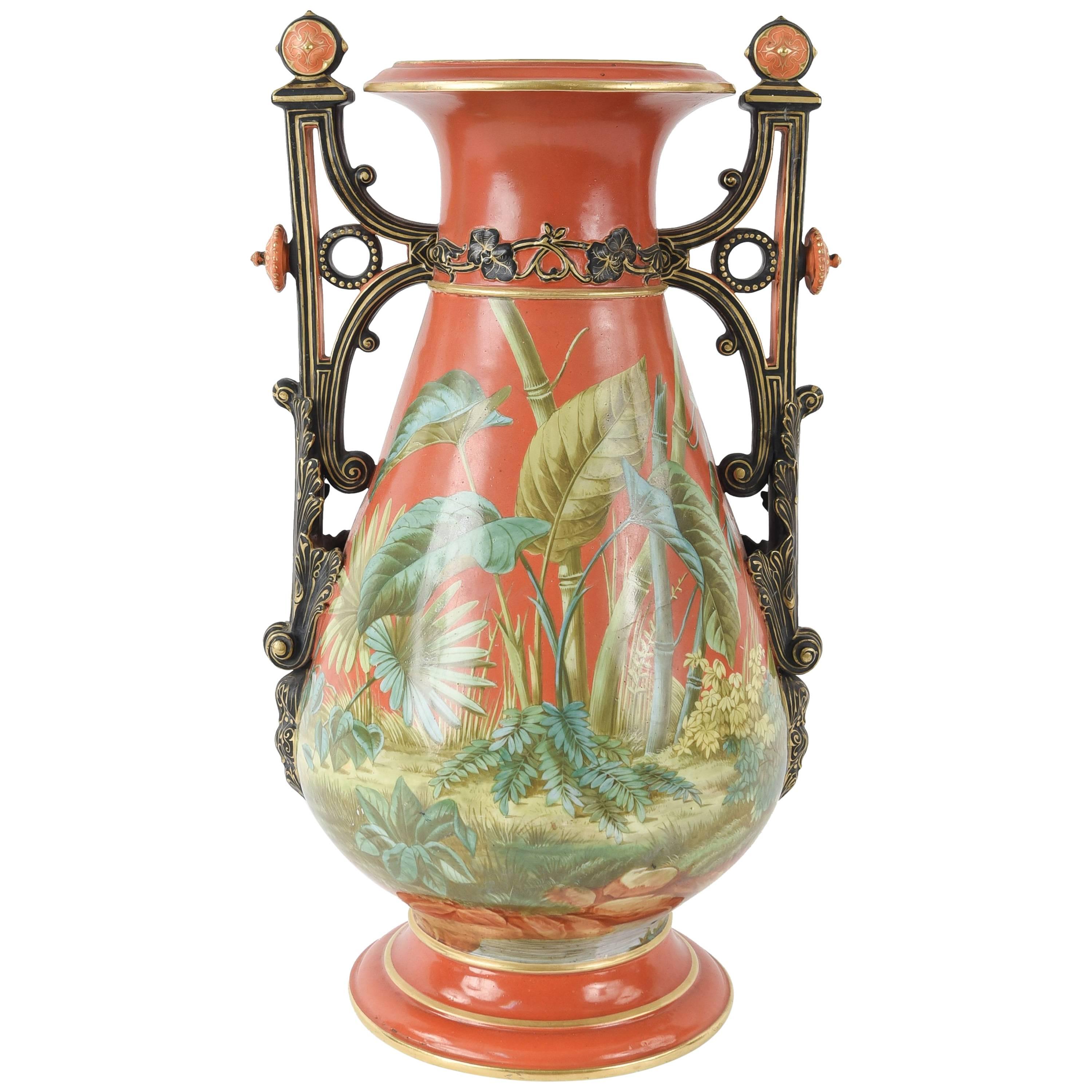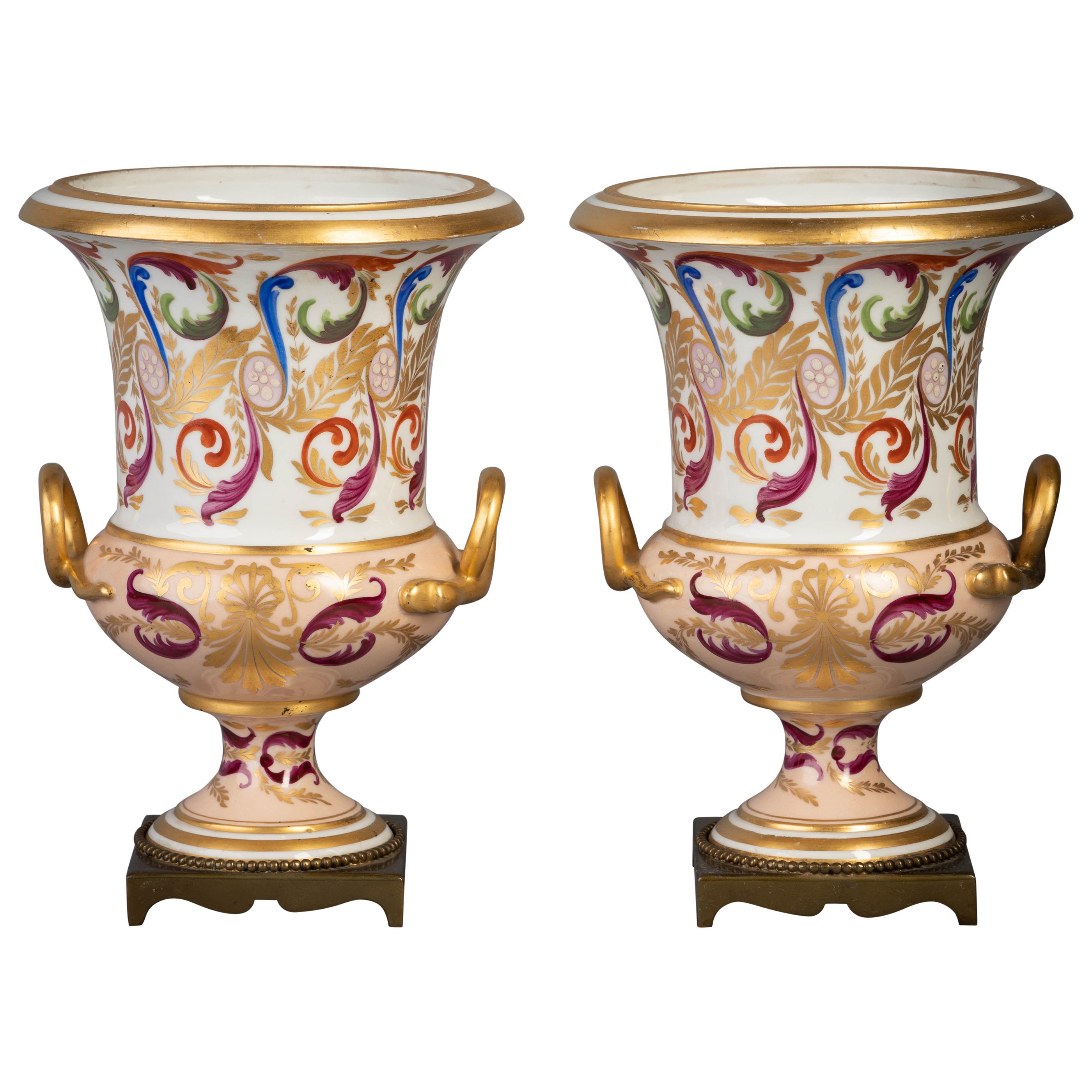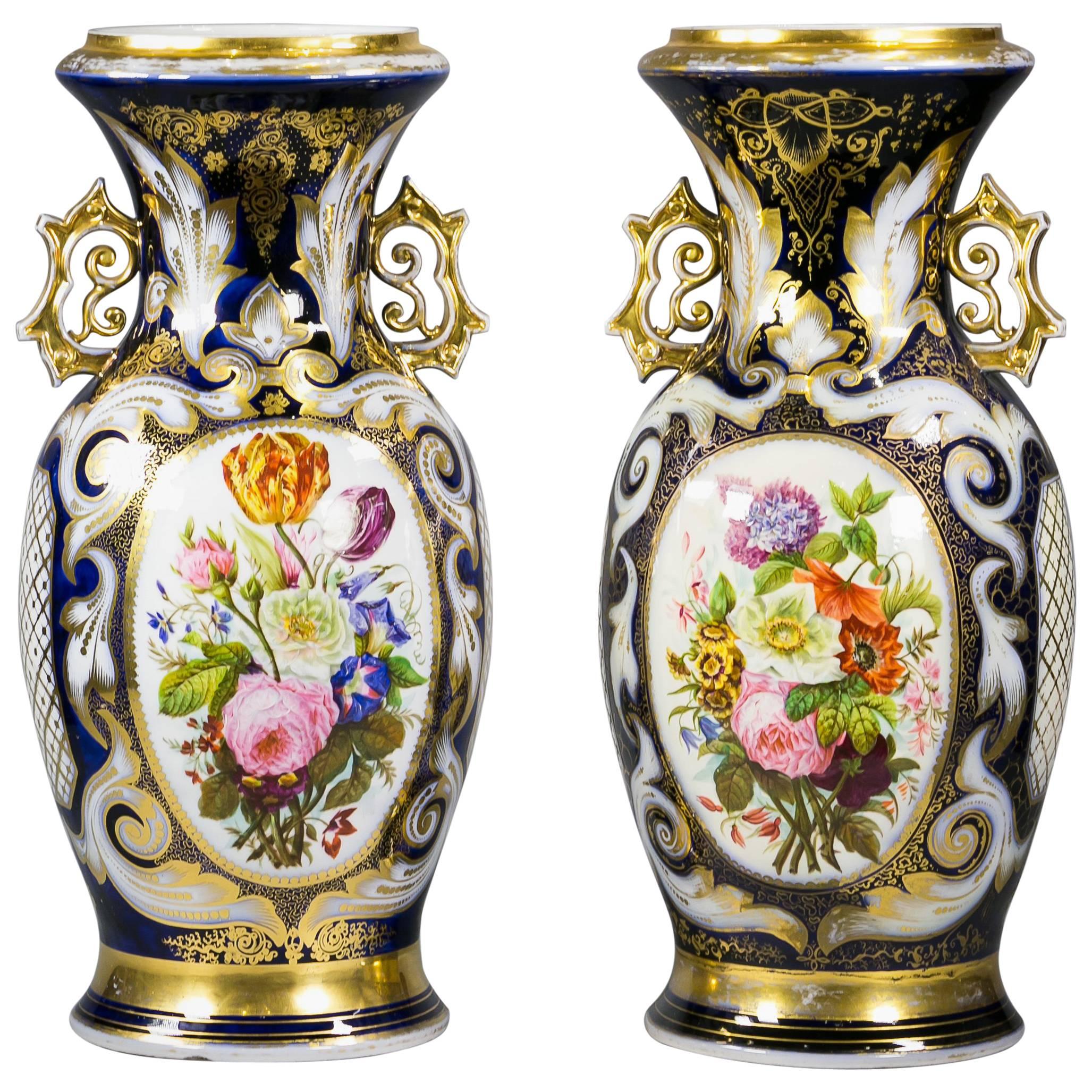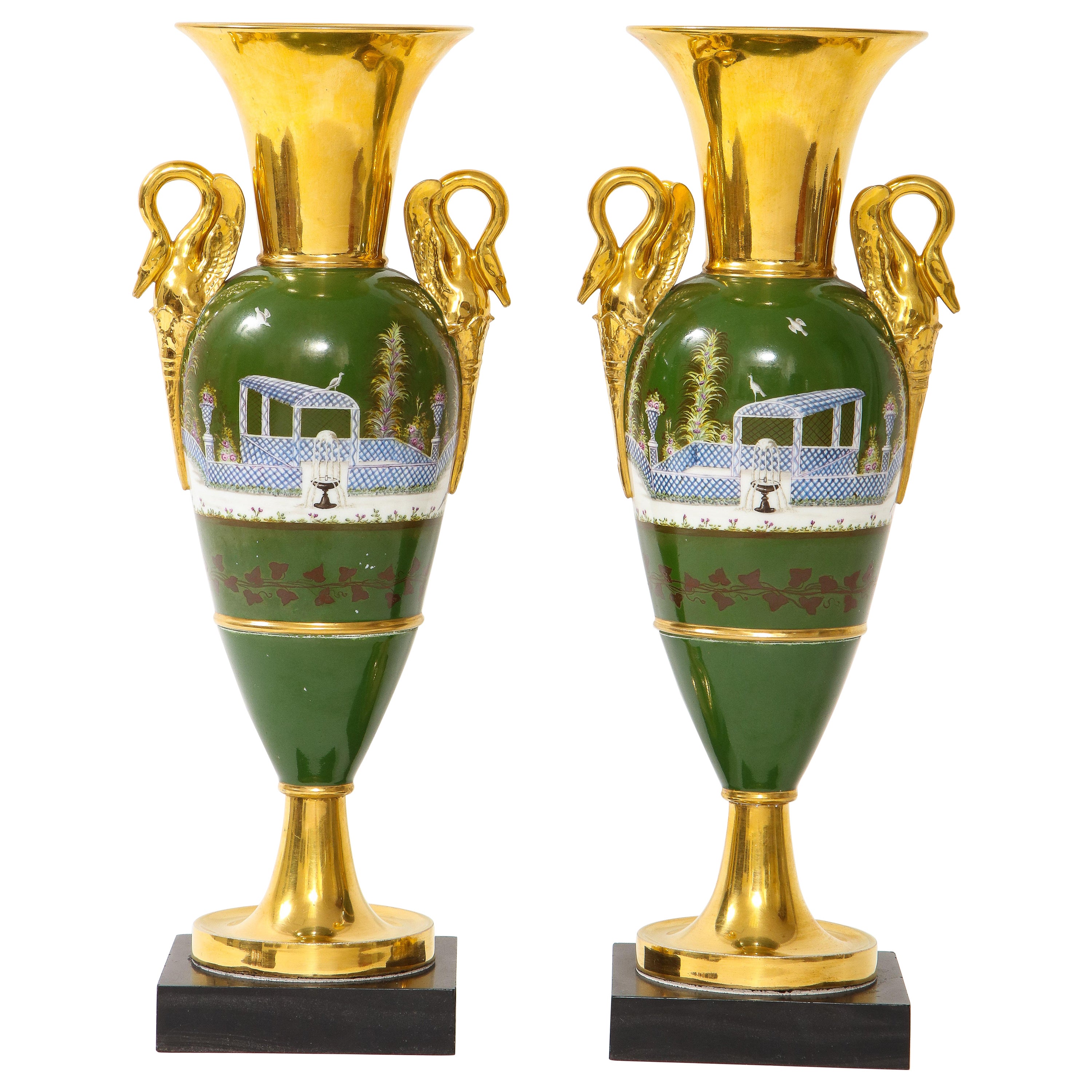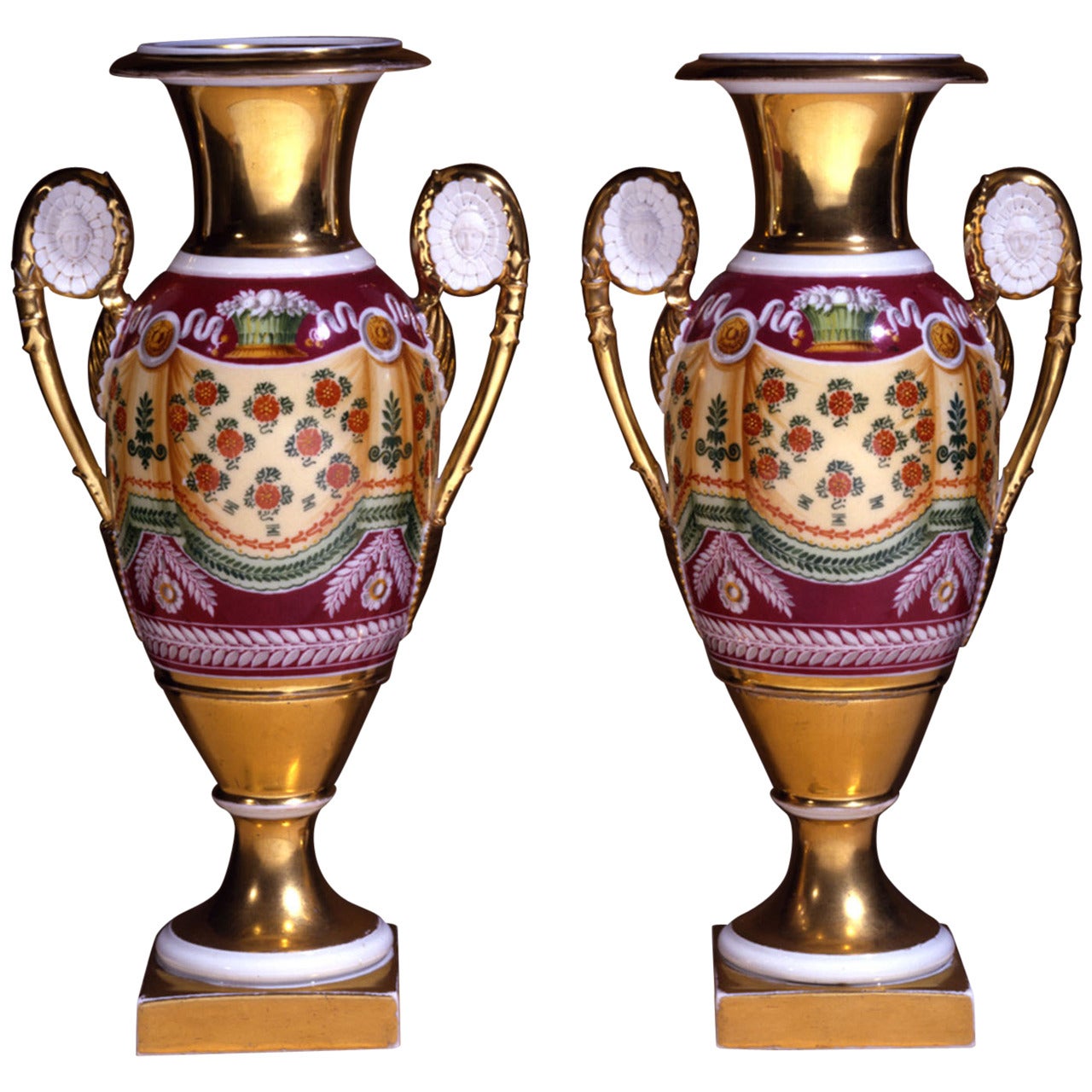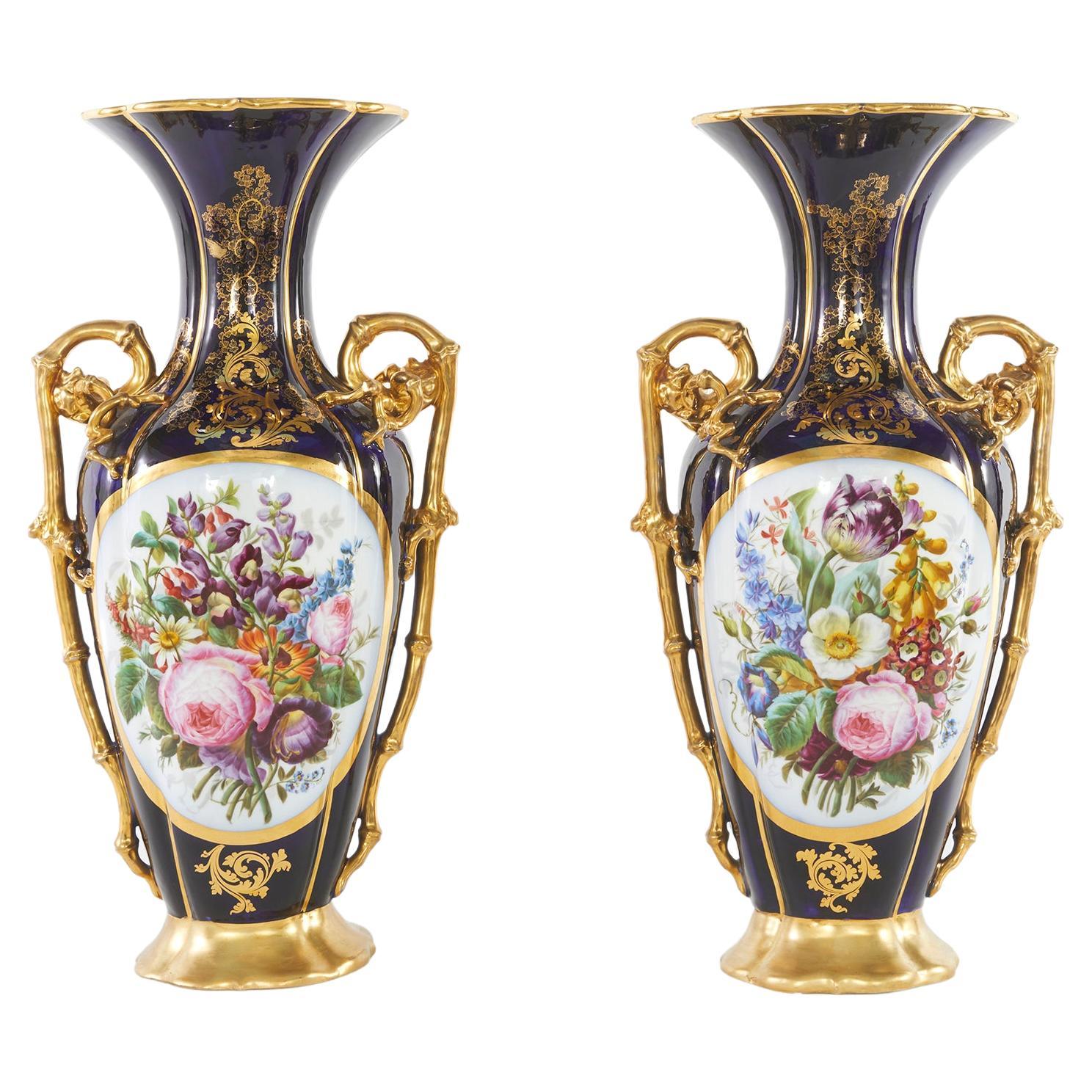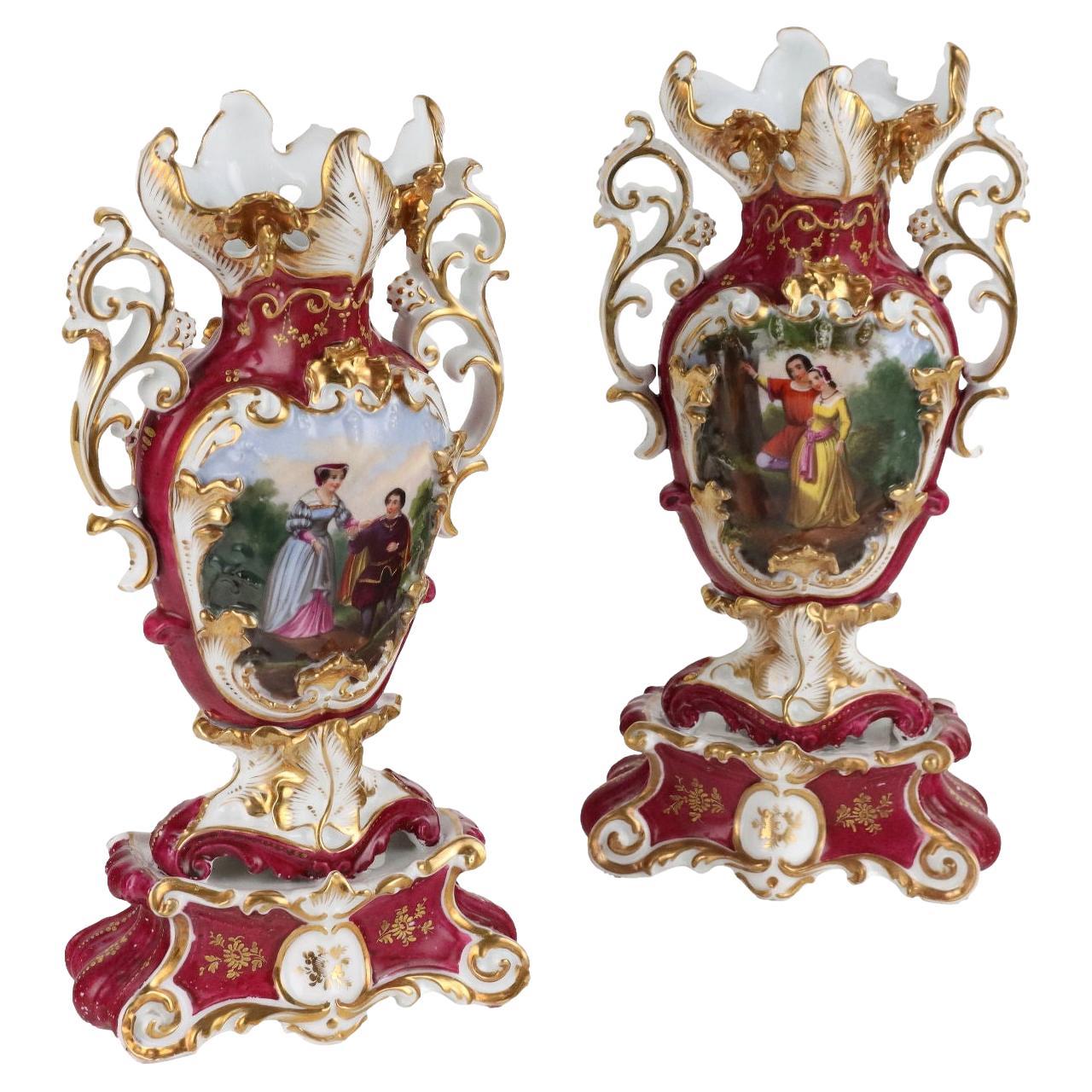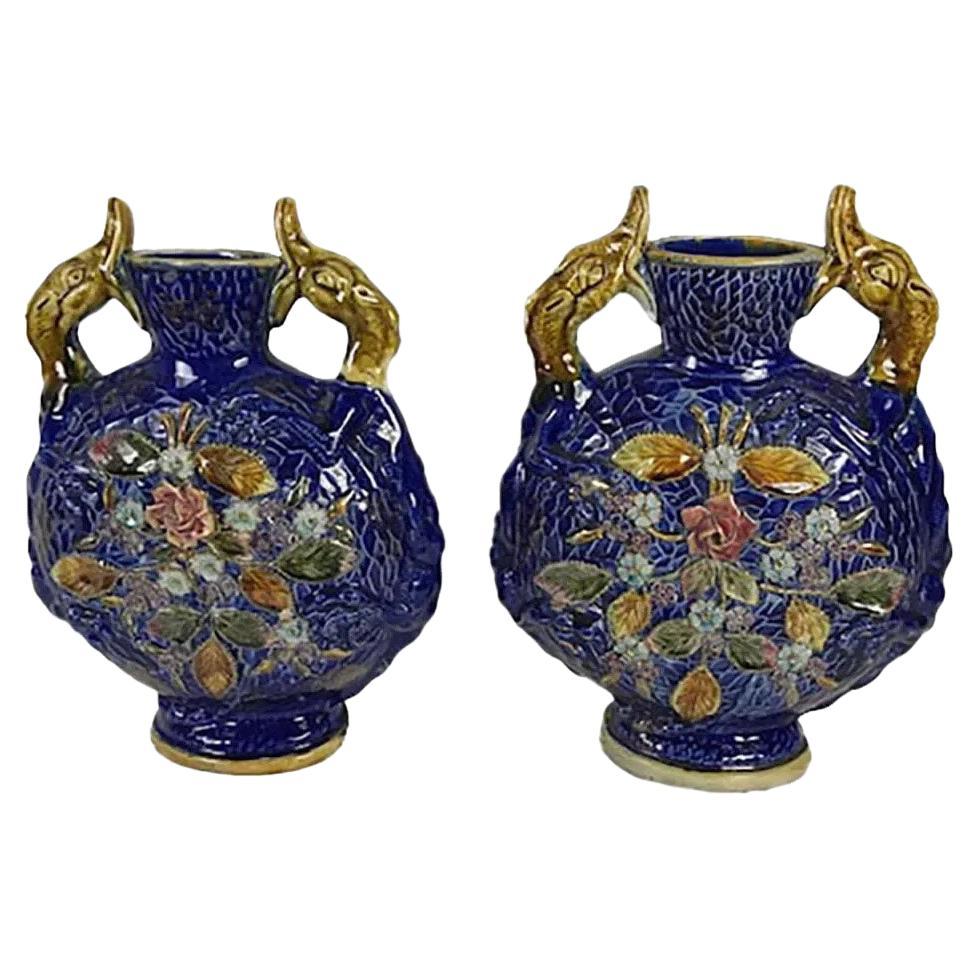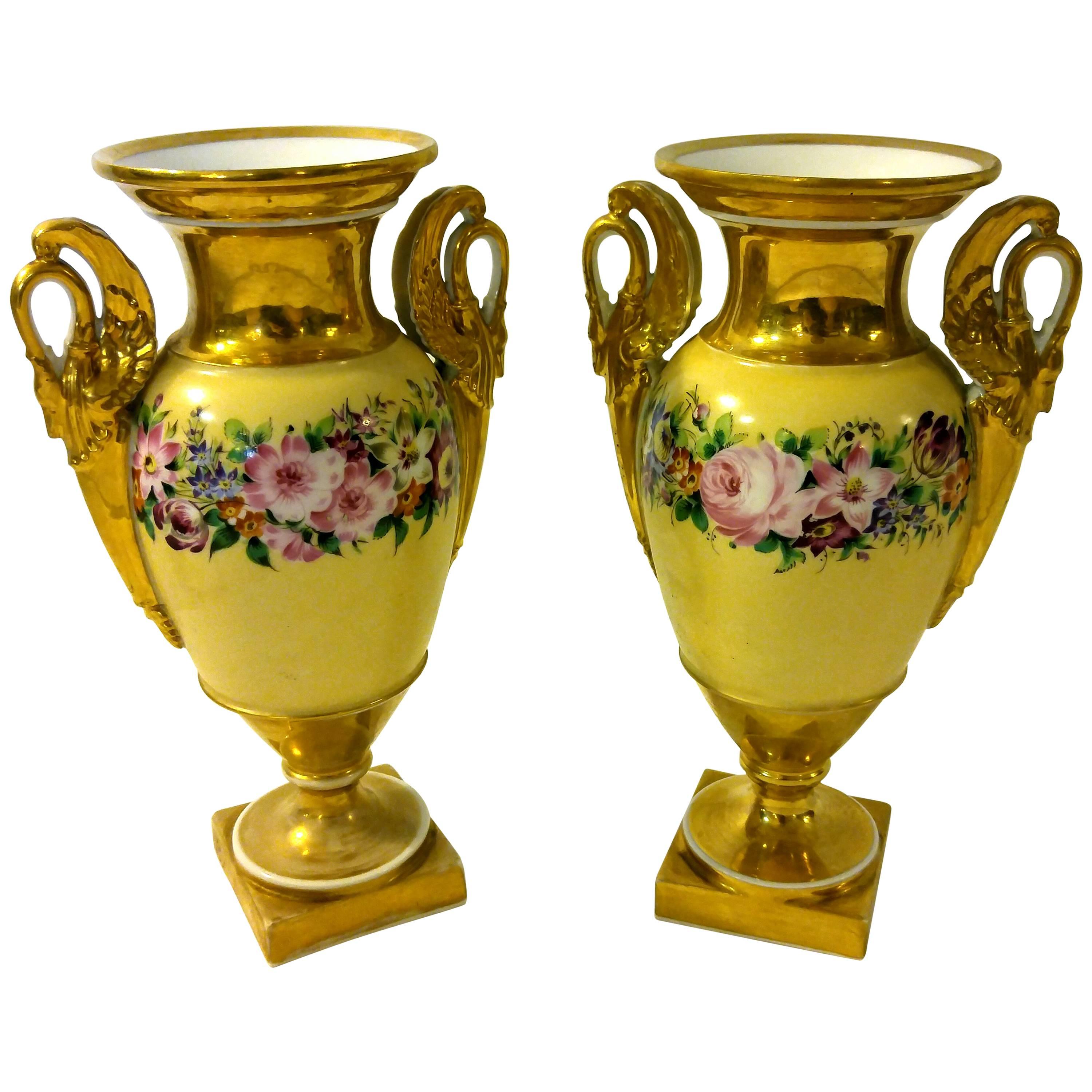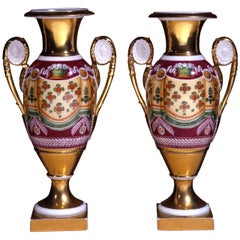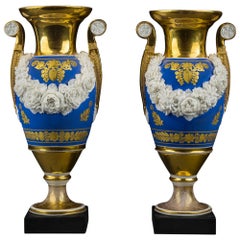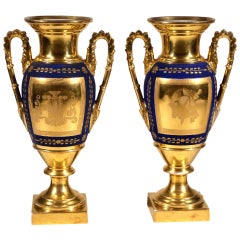
Pair “Old Paris” Blue and Gold Porcelain Handled Vases
View Similar Items
Want more images or videos?
Request additional images or videos from the seller
1 of 3
Pair “Old Paris” Blue and Gold Porcelain Handled Vases
About the Item
- Dimensions:Height: 16.375 in (41.6 cm)
- Materials and Techniques:
- Place of Origin:
- Period:
- Date of Manufacture:about 1820
- Condition:Contact Dealer.
- Seller Location:New York, NY
- Reference Number:Seller: FAPG 18871D1stDibs: U121107903257
About the Seller
No Reviews Yet
Recognized Seller
These prestigious sellers are industry leaders and represent the highest echelon for item quality and design.
Established in 1952
1stDibs seller since 2010
Associations
Art Dealers Association of America
More From This SellerView All
- Pair of 'Old Paris' Porcelain Vases with Drapery DecorationLocated in New York, NYFrench Pair “Old Paris” Porcelain Vases with Drapery Decoration, about 1820 Porcelain, painted and gilded 13 1/16 in. high CONDITI...Category
Antique 1820s French Empire Vases
MaterialsPorcelain
- Pair of “Old Paris” Porcelain Coolers, Yellow Bands, Floral WreathsBy Darte FrèresLocated in New York, NYDarte Frères, Paris, made, circa 1820. Porcelain, partially painted and gilded. Measures: 14 1/4 in. high, 10 3/8 in. wide (through the handles), 7 3/4 in. deep. Signed (with stencil, in black, on the bottom of each): Darte. f. Recorded: cf. Régine de Plinval de Guillebon, Porcelain of Paris, 1770–1850 (New York: Walker and Company, 1972), p. 333 no. 79 illustrates the mark on these coolers. Some of the most beautiful porcelain produced in Paris during the Empire/Restauration periods was made or sold by the firm of Darte Frères. Although the Darte family, which came from Namur, then in The Netherlands, had set themselves up in the business of the manufacture of porcelain as early as 1794–95, by 1803 the three Darte brothers had decided, as Régine de Plinval de Guillebon notes (ibid., p. 231), that “each should have his own establishment,” and, indeed, by 1804 their prior business partnership had been “annulled,” and from that point forward there were two businesses using the name Darte. The Darte brothers, Louis Joseph and Jean François, began independent operation in 1804 at the Hôtel Montalembert, at 90, rue de la Roquette. Their business arrangements were only formalized in 1808, at which time they began to use the name “Darte Frères.” They remained in the business until 1825, when their partnership was dissolved. Darte Frères produced a large variety of porcelain, including vast dinner and...Category
Antique 19th Century Empire Wine Coolers
MaterialsPorcelain
- Pair of "Old Paris" Vases with Garlands of Bisquit FlowersLocated in New York, NYFrench, circa 1820. Porcelain, painted and gilded, with applied bisquit flowers 8 13/16 in. high. Inscribed (with incised mark, under the base of each): 3.Category
Antique 1820s French Neoclassical Porcelain
MaterialsPorcelain
- Pair of Porcelain Urn Form Fruit Coolers with Covers and LinersBy Stône, Coquerel, and Legros d'AnisyLocated in New York, NYPair Footed Fruit Coolers, about 1810-20 Stône, Coquerel, and Legros D’Anisy, Paris (active 1808–49) Porcelain, partially transfer printed in sepia and green and gilded Each, 13 1/2 in. high x 10 in. wide x 7 1/2 in. deep Signed and inscribed (on underside of one top and one base, with printed mark): STÔNE / COQUEREL / ET / LE GROS / PARIS / PAR BREVET D’INVENTION: Manufre de Décors sur Porcelaine Faience; variously inscribed with decorators’ initial in green and brown (on underside of one top and one base): M; variously inscribed with incised mark (on underside of one liner and both bottoms): 3; inscribed (in blue script, on the inside of one liner): 615 The Parisian firm of Stône, Coquerel, and Legros d'Anisy is distinguished for the important role that it played in the introduction of transfer-printed decoration on fine china in France. Although the process had been known and used in Great Britain since the eighteenth century, it was, according to Régine de Plinval de Guillebon in her book, Porcelain of Paris 1770–1850 (New York: Walker and Company, 1972), not until 1802 that Potter, Blancheron, Constant, Neppel, Cadet de Vaux & Denuelle took out a patent in France for transfer-printing on earthenware, and it was only on February 26, 1808, that John Hurford Stône, his brother-in-law, Athanase Marie Martin Coquerel, and Francois Antoine Legros d'Anisy not only took out a patent for transfer-printing on china, but also established a Stône, Coquerel, and d'Anisy partnership for the manufacture of transfer-printed ceramics. Their address from 1808 until 1818 was at 9, rue de Cadran, Paris. Prior to this, Stône and Coquerel had been partners at a creamware factory in Creil, France, and Legros d’Anisy had worked at the Sèvres factory, where he had apparently developed the transfer-printing technique for which his own firm became well known. “The process,” notes de Guillebon, was “based upon removing from the engraving a ‘pull’ made on a specially coated filter-paper, which was pressed onto the object to be decorated; this object itself was covered with a film. Firing took...Category
Antique Early 19th Century French Neoclassical Wine Coolers
MaterialsPorcelain
- Pair of Medici-Form VasesLocated in New York, NYAttributed to Schoelcher, Paris, France, circa 1830. Porcelain, painted and gilded. 16 1/4 in. high, 9 1/2 in. wide, 9 1/2 in. deep. Ex Coll.: by repute, Joseph Bonaparte...Category
Antique Mid-19th Century French Empire Porcelain
MaterialsPorcelain
$25,000 / set - Earthenware John Bennett Plaque with Pink and Blue PhloxBy John BennettLocated in New York, NYFAPG 20247D John Bennett (1840-1907), New York Plaque with pink and blue phlox, circa 1881-1882 Earthenware, painted and glazed Measures: 14 7/8 in. diameter, 1 13/16 in. high Signed and inscribed (on the back): J B[monogram] ENNETT / E 24 NY. / MC [or] CM If the Herter Brothers was the most distinguished and successful cabinet making and decorating firm in New York in the 1870s-1880s, the transplanted Englishman John Bennett was probably the most gifted ceramicist working in New York in the Aesthetic period. (Bennett was included in The Metropolitan Museum of Art’s landmark exhibition, In pursuit of beauty: Americans and the Aesthetic Movement, in 1986–87, and Alice Cooney Frelinghuysen’s chapter, “Aesthetic Forms in Ceramics and Glass,” pp. 216–19, significantly informs this essay). Born in England, the son of a potter who worked in the Staffordshire district, Bennett came under the influence of John Sparkes, head of London’s Lambeth School of Art. Soon thereafter, he was hired by Henry Doulton of the eponymous firm to teach artisans there the new art of underglaze faience decoration, which was part of a revival of the sixteenth-century interest in hand-painted ceramics. A number of Bennett’s works for Doulton were shown in the Doulton display at the Centennial Exposition in Philadelphia in 1876, and the considerable success enjoyed by Bennett and Doulton from an American audience undoubtedly played an important role in Bennett’s decision to leave Doulton and England and set up shop in New York in 1877. By the next year, he had already established a studio in New York, where he produced his own pottery in the tradition of the Arts & Crafts innovators, William Morris and William De Morgan, and also taught classes at the new Society of Decorative Art to the growing band of women who had taken up china painting, both professionally and avocationally. Bennett’s pottery developed a very serious following among students and collectors, and was offered for sale at such leading retail establishments as Tiffany & Company in New York. Typically, his work was brilliantly colored, with carefully drawn naturalistic flowers against a monochromatic background. Bennett’s fully developed American work, particularly pieces of larger scale, is exceedingly rare, as he worked in New York only from 1877 to 1883, in which year he withdrew to a farm in rural West Orange, New Jersey, where his production continued on a limited basis. He remained listed as a ceramicist there until 1889. While in New York City, Bennett maintained a studio at 412 East 24th Street. The present charger, boldly featuring pink and blue phlox, is signed by Bennett, and is inscribed “E 24 NY,” indicating its manufacture during Bennett’s time in New York. Although it is not dated, this piece is closely related stylistically to various dated pieces from 1881–82, which would place its production toward the end of Bennett’s New York years. Although we do not know whether Bennett worked out of this 24th Street studio from the outset, he was indeed working there by 1879 when he made (and signed, inscribed, and dated) a charger with white and red flowers now in the collection of the Art Institute of Chicago, which specifically points to “412 East 24 / NY” (acc. no. 1998.317). Additionally, the U.S. Census of 1880 lists Bennett as a ceramicist located at that same address, married to Mary Bennett with whom he had had six children. There are several other examples from Bennett’s time in New York City, which also give his studio address on East 24th Street, including a covered jar in cadmium yellow with indigo and green flowers made in 1881; an undated footed vase with lilac...Category
Antique 1880s American Aesthetic Movement Ceramics
MaterialsEarthenware
You May Also Like
- Regency Period Botanical Old Paris Porcelain Vase PairLocated in Savannah, GAThis exquisite petite pair of Regency Period hand-painted Old Paris porcelain spill vases feature two seperate displays of delicate flowers...Category
Antique 1820s French Regency Vases
MaterialsPorcelain
- Pair of French 19th Century Old Paris Porcelain Swan Handle Vases, MarkedBy Porcelaine de ParisLocated in New York, NYA fine pair of French 19th century Empire Period Old Paris Porcelain swan handle vases. Each is beautifully hand-painted with a light blue colored ground and further adorned with 24K...Category
Antique 1820s French Empire Vases
MaterialsPorcelain
$10,000 Sale Price / set20% Off - Old Paris Ware Porcelain Exhibition VaseLocated in Norwalk, CTA gorgeous antique French Old Paris Ware exhibition piece depicting water with flamingo, other birds, and tropical plants. Marked on the bottom OG. E.D. Mos...Category
Antique Late 19th Century French Vases
MaterialsPorcelain
$3,000 Sale Price47% Off - Pair of Paris Porcelain Two Handled Vases, circa 1880Located in New York, NYOn metal mounts.Category
Antique 1880s French Vases
MaterialsPorcelain
- Pair of Paris Porcelain Two Handled Vases, circa 1840Located in New York, NYPair of Paris porcelain two handled vases, circa 1840.Category
Antique 1840s English Vases
MaterialsPorcelain
- Pair of French 19th C.Empire Period Old Paris Porcelain Swan Handle VasesBy Porcelaine de ParisLocated in New York, NYA fine pair of French 19th century Empire Period Old Paris porcelain swan handle vases. Each is beautifully hand-painted with a green colored ground and further adorned with 24K gold-painted accents around the neck, handles, and bases. The vases are of a slender amphora form with git swan handles and two-tone matte and shiny 24K gold decoration throughout. Each vases body is hand-painted with landscape decoration which depicts a beautiful outdoor gazebo...Category
Antique 1820s French Empire Vases
MaterialsPorcelain
Recently Viewed
View AllMore Ways To Browse
Pair Old Paris Vases
Pair Old Paris Porcelain Vases
Pair Monumental Vases
Vintage Large Murano Vases
Footed Vessel Bronze
Red Ceramic Pot
Large Majolica Vases
Ruby Glass Vase
Bathroom Louis Xv
White Opaline Vase
Antique Burgundy Paint
Coiled Handmade
Deco Emerald Furniture
Murano Orange Brown
Retro 80s Bedroom
Murano Mid Century Pair Of Vases
Silver Overlay Glass Vase
Vase Girl

